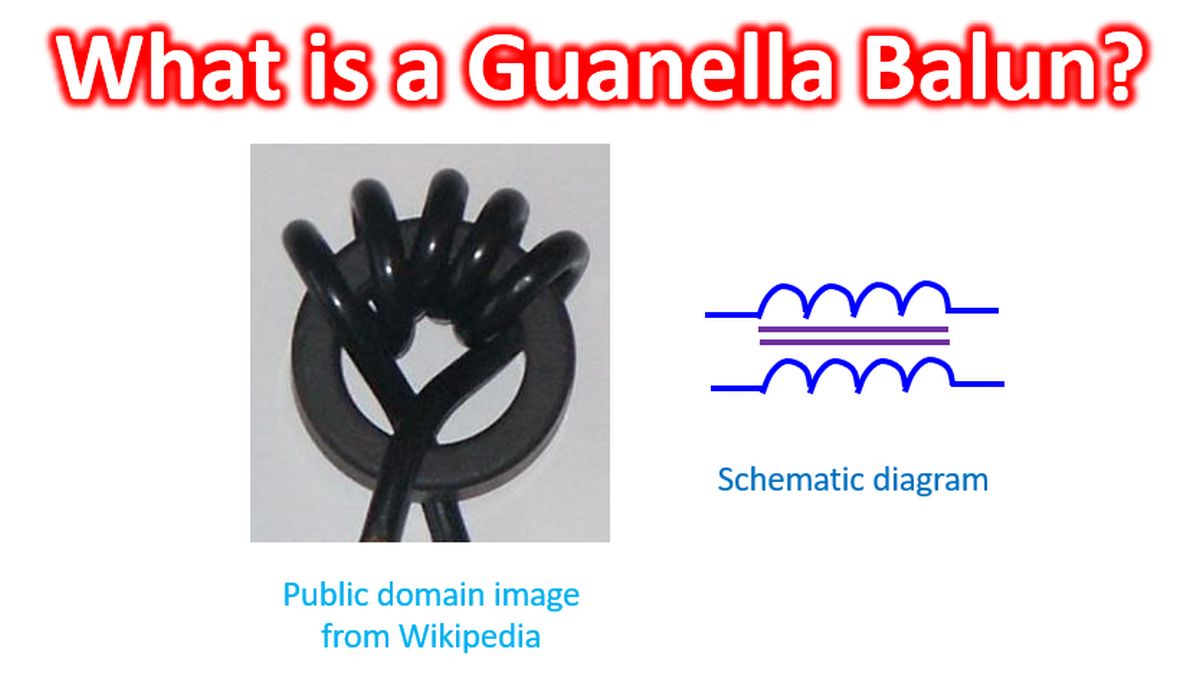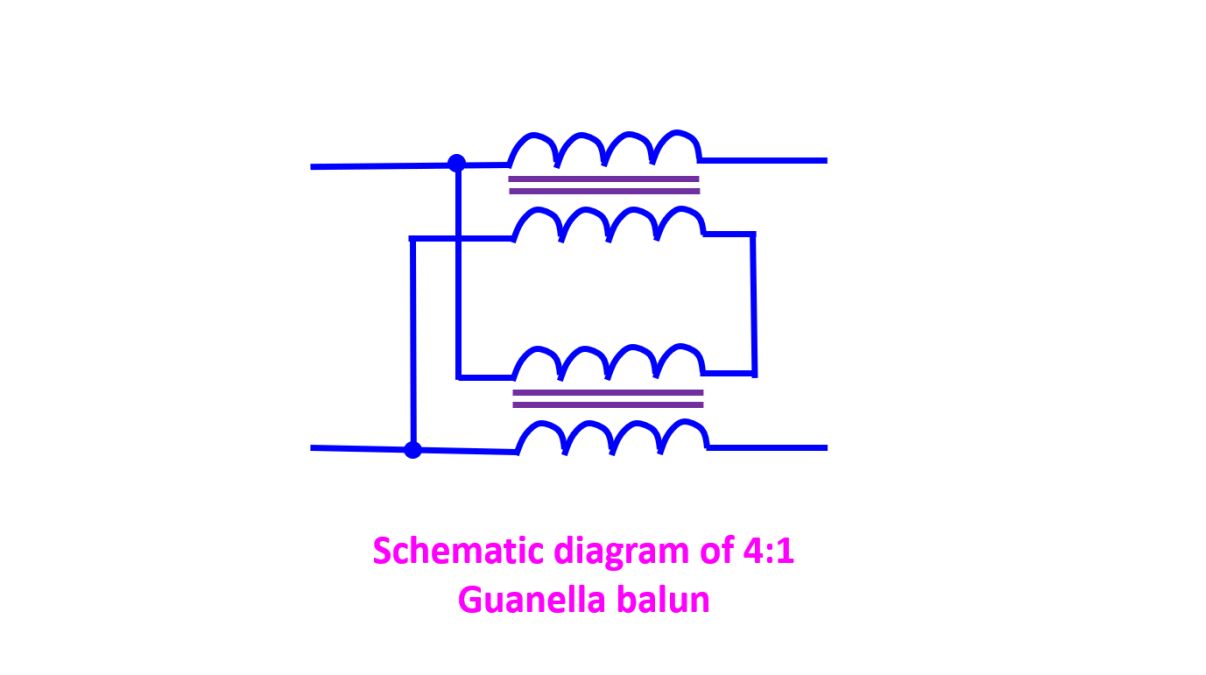What is a Guanella Balun?
Guanella balun was invented by Gustav Guanella, a Swiss engineer as a “New method of impedance matching in radio-frequency circuits” in 1944. Balun stands for balanced line to unbalanced line. It is typically connected between a balanced antenna and an unbalanced feeder coaxial cable. Balun is a type of transformer. A 1:1 balun will connect to a 50 Ohms unbalanced line and present a balanced output at 50 Ohms. In its simplest form, a 1:1 Guanella balun is an RF choke which presents a high impedance to the unablanced current flowing on the external aspect of the shield or outer conductor of the coaxial cable. This will force RF energy to and from the antenna to flow only through the inner conductor and the inner aspect of shield, thus providing best efficiency to the radio.

This simple 1:1 Guanella balun or choke consists of a transmission line wrapped into a coil. It could be made of bifilar wires, coaxial cable or twisted pair of wires. The 1:1 Guanella balun is often wound on a ferrite rod or ferrite toroid to increase its inductance. Higher the number of turns, higher the common mode impedance. Higher permeability of ferrite core also increases the common mode impedance to the common mode current on the external aspect of the coaxial shield. There is another type known as 4:1 Guanella balun in which two 1:1 baluns are connected in a way that the inputs are in parallel and outputs are in series. That is meant for different applications like Folded Dipoles, Full-Wave Loops like Delta Loop, where an impedance transformation is also needed in addition to common mode choke.
